Uganda Wild Animals Checklist & Where they are found in Uganda: Like other African nations, Uganda is a popular travel destination for travelers who want to experience the continent’s untamed jungle culture. The country is the ideal location for those who adore primates because it is home to all five of the big five, which include lions, African elephants, leopards, buffaloes, and rhinos.
These animals can be viewed in the wide-open savanna grasslands located in the country’s many National Parks. There are 342 different species of mammals known to exist in Uganda, including both small and big mammals. There are a number of places you may visit if you want to see the animals of Uganda and have an experience that is worthwhile of your money. Below is a list of the several groups that wildlife is divided into.
Uganda Wild Animals Checklist & Where they are found in Uganda
Gorilla Safari Animals:
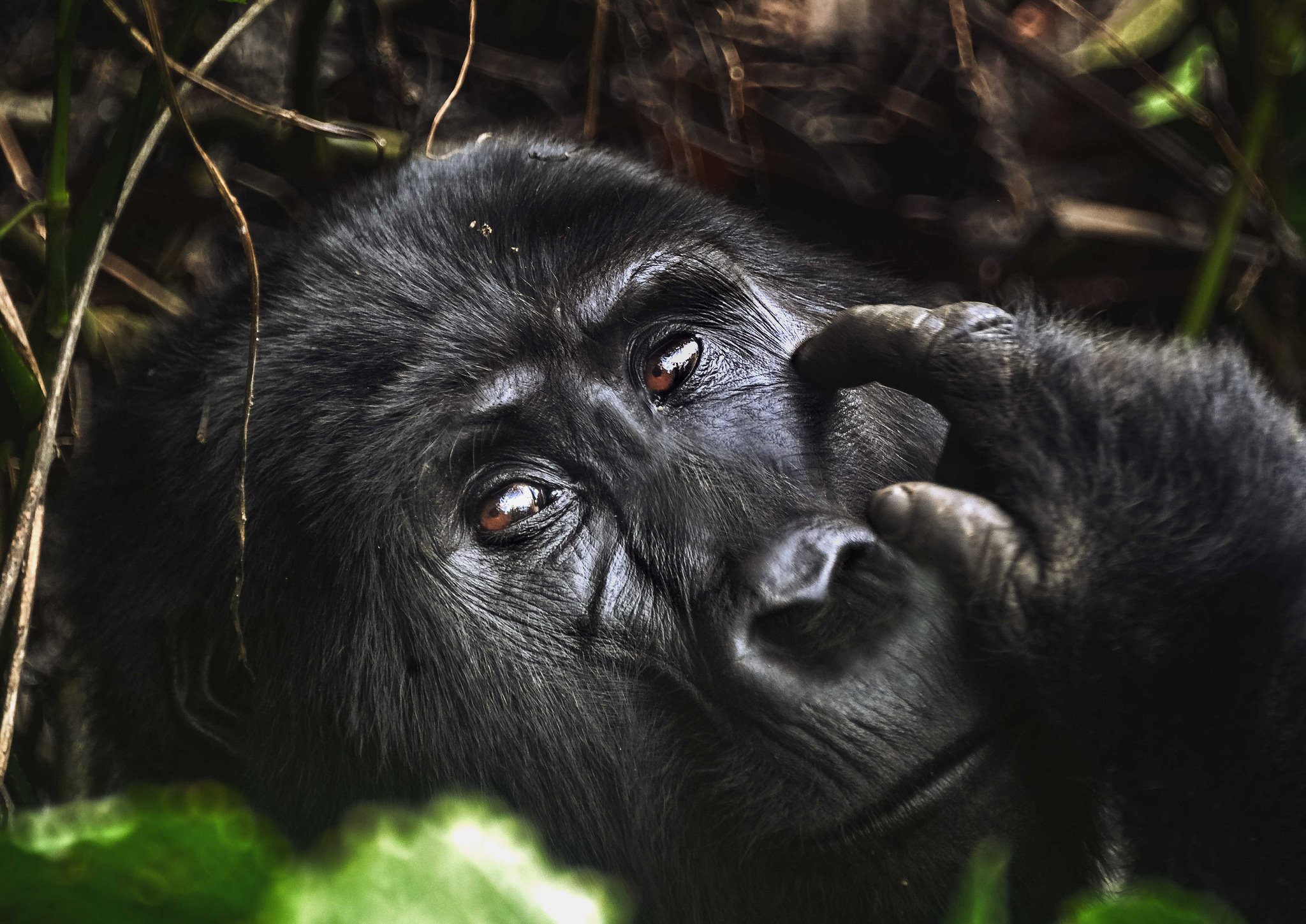
The mountain gorilla (Gorilla beringei beringei) is the giant primate (great ape), a subspecies of the eastern gorilla only found in East and Central Africa. It is the biggest living primate. It is larger, more powerful, and has thicker, longer fur than other gorilla species, allowing it to survive only in harsh environments at high altitudes and in extreme cold.
Like human thumbprints, the mountain gorilla has a nose print unique to each individual. The mountain gorilla is the most threatened race to extinction and the only gorilla species found in Uganda. Uganda has over half of the world’s mountain gorilla population found on the Virunga Mountains slopes in Mgahinga National Park and Bwindi Impenetrable National Park. A massive adult male silverback mountain gorilla watching over his kids playing up in the canopy.
Where do mountain gorillas live?
The mountain gorilla lives in east-central Africa in just two isolated groups – one in the Virunga Volcano Mountains, a cross-border region spanning three forest reserves in Uganda, Rwanda, and the Democratic Republic of Congo. The other lives in a far-flung, isolated rift valley montane forest in Uganda, in Bwindi Impenetrable National Park, extending to Sarambwe Nature Reserve in DRC. Mountain gorillas live only in high-altitude montane and bamboo forests, between 8,000 – 13,000 feet (1,400 m to 3,800 meters), surrounded by human settlements.
Mountain Gorillas Relation to humans
The mountain gorilla is 98% genetically similar to a human. Yet, it hasn’t developed the necessary immunity to common human diseases, making it vulnerable to human illnesses. Even a simple cold can negatively impact the gorillas’ health. Gorilla tourism is mainly why these creatures have a slim chance of surviving extinction in the first place.
So conservation teams and governments have stringent procedures to minimize the spread of human diseases to these precious creatures. Some measures include health monitoring, habituating them for tourism, controlling the number of visitors, keeping at least 10 meters from them, and wearing a facemask during visits.
Mountain Gorillas have an average lifespan of 35 years in the wild.
Mountain gorillas are the bulkiest and most powerful living primates. An average male mountain gorilla can weigh 136 to 230 kilograms (300 to 485 pounds) and reach a standing height of 4 to 6 feet (1.2 – 1.8 meters).
Gorilla hand scraps back off a fallen tree to find bugs to compliment his veggie diet
Diet
Mountain gorillas spend a quarter of their day eating a vegetarian diet, primarily including roots, shoots, leaves, fruit, wild celery, tree bark, and pulp. In the thick forests of Uganda, Rwanda & DRC, troops find plentiful food for their vegetarian diet. They supplement their plant-based diet with raw protein from snails and ants, and their source of sodium is tree bark.
An adult male mountain gorilla can eat up to a whopping 34 kilos (75 lbs) a day, and a female up to 18 kilos (40 pounds). They must walk on all fours to support their fat, heavy bellies and spend more time sitting, grooming, farting, fornicating, and socializing to allow digestion. At night, mountain gorillas sleep together in temporary nests on the ground or in trees built for just that night from foliage. Infants will share their mother’s nests for safety and warmth.
Social Life of a Mountain Gorilla
- Most mountain gorillas live in stable family groups (called troops or bands) of around 10 – 40 individuals, with one dominant male (named a silverback) and several females. The silverback is responsible for the family’s well-being, including finding good foraging spots, defending them from intruders, managing family feuds, finding secure nesting spots, and patroling a home range of 0.75-to 16 square miles.
- Those who challenge this alpha male are apt to be cowed by impressive shows of physical power. He may stand upright, throw things, make aggressive charges, and pound his massive chest while barking out powerful hoots or unleashing a frightening roar.
- Despite these displays and the animals’ evident physical power, mountain gorillas are generally calm and nonaggressive unless someone/something threatens them.
- In the gorilla group, both males and females care for their infants, hugging, carrying, and playing with them. When they get older, most males and around 60% of females leave their birth group to join another troop, which helps prevent inbreeding.
Communication
- Gorillas have displayed significant intelligence in captivity and have even learned simple human sign language. Primatologists have observed mountain gorillas use 16 different types of communication calls.
- However, no mountain gorillas have ever survived in captivity; those in captivity are the eastern lowland gorillas, small and more adaptive than mountain gorillas.
- The mountain gorilla uses short barks when it’s mildly alarmed or curious. To intimidate rivals, male gorillas strut with stiff legs, beat their chests, and use vocalizations like roars or hoots.
Life Expectancy
- In the wild, mountain gorillas can live up to 35 years old.
- Baby gorillas are classed as infants until they reach around three-and-a-half years old and adults from about eight years.
- Males between 8-12 years are called ‘blackbacks.’ Then, from 12 years old, they develop a silver section of hair over their back and hips, earning them the name ‘silverback.’
Gorilla Reproduction
- Mother gorilla playing with her infant, as humans do with their babies.
- Mountain gorilla reproduction
- Female gorillas give birth to one infant after a pregnancy of nearly nine months.
- Unlike their giant parents, newborns are tiny—weighing four pounds—and able only to cling to their mother’s fur. These infants ride on their mothers’ backs from four months through the first two or three years of their lives.
- From three to six years old, young gorillas are adorable to watch on a gorilla trekking excursion because they remind us of children with their charming antics. Much of their day is spent in play, climbing trees, chasing one another, and swinging from branches.
Mountain Gorilla Conservation
The International Union for the Conservation of Nature (IUCN), which sets the conservation status of species, changed the mountain gorilla status from “critically endangered” to “endangered” in 2008 as their numbers have improved. Thanks to the aggressive conservation programs around these great apes involving governments, NGOs, tour operators, and private individuals.
Scientists, however, warn that they could quickly slip back into being critically endangered if conservation efforts don’t get the attention they deserve.
However, conservationists consider the mountain gorilla conservation story one of the most successful programs in the natural history world.
Trekking deep into the mountain jungle to find mountain gorillas and spend a moment with them is one of Africa’s top bucket-list adventure
How to see mountain gorillas
- Tourists can see mountain gorillas on a primate jungle safari called Gorilla Trekking Safaris.
- Tour operators widely organize all-inclusive gorilla trekking tours, taking care of all the ground handling, like processing the trekking permit and securing your accommodation and transport. However, some travellers choose to go through the process themselves.
- Gorilla trekking tours usually start from Entebbe and head southwest into the mountain rainforest jungles of Bwindi Impenetrable National Park or Mgahinga National Park.
- Uganda Wildlife Authority will charge a foreigner USD 700 for a gorilla permit that allows them a guided excursion into the jungles and 60 minutes in the presence of a habituated gorilla family. Resident foreigners working in Uganda buy the permit for much less ($600) and a Ugandan 250k a piece.
- You can choose to experience the great apes in Mgahinga National Park, which is not far from Bwindi. However, Bwindi is a better choice because it offers more than four sectors or trailheads with outstanding accommodation options.
For a more profound and extensive time with the mountain gorillas, we recommend a gorilla habituation experience. Uganda offers gorilla habituation experiences in Bwindi to at least eight people daily. On the adventure, four people can go with primatologists and rangers into the jungle, find a semi-habituate gorilla family and spend at least four hours with them. It’s a perfect excursion for gorilla photography.
Gorilla habituation experience in Uganda’s Bwindi Impenetrable Forest costs USD 1,500 per permit.
Rwanda also offers excellent gorilla trekking tours but at a price that doubles gorilla trekking in Uganda and DR Congo. Rwanda’s gorillas are easy to access from the airport.
DR Congo is a little bit tricky to traverse. However, some hard souls risk their lives and take on Congo’s insecure jungles.
If you are heading into the jungles to find the mountain gorillas, pack right and light. Take light hiking boots, light trousers that won’t make you sweat, and a long-sleeved t-shirt. Carry a light rain jacket, poncho, and waterproof backpack for your gadgets and snacks, and hit the African jungle in style.
Seeing the mountain gorilla is a once-in-a-lifetime experience and worth every penny.
Herbivores in Uganda
The herbivores that you should expect to see while on a safari to Uganda include the following:
Antelopes:
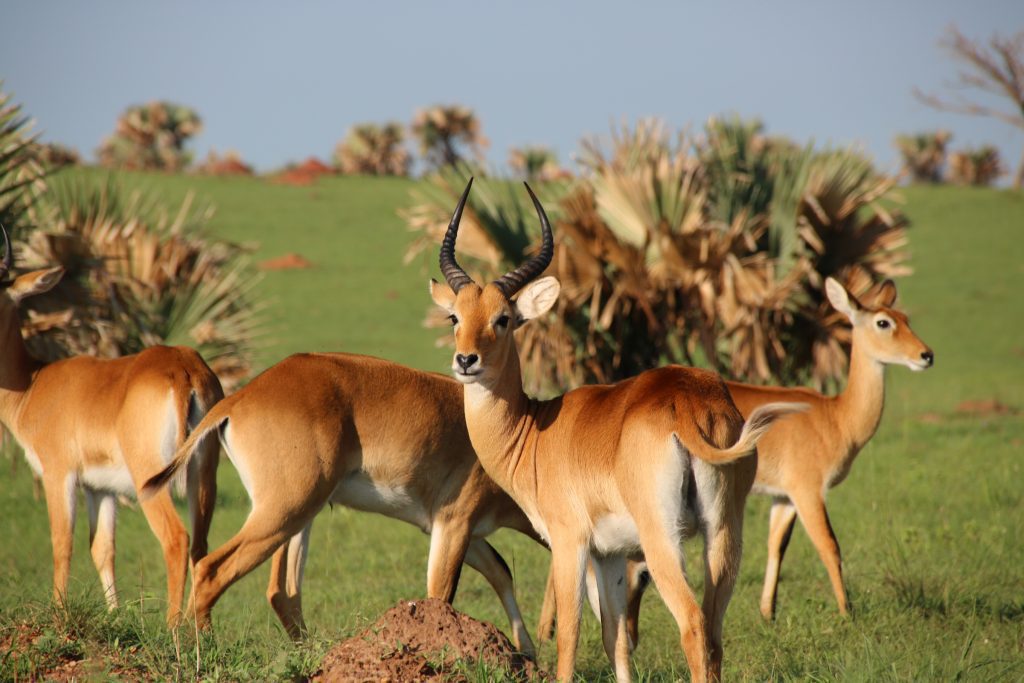
The country’s several National Parks are home to a wide variety of antelope species, which are divided into two groups: giant antelopes and medium antelopes. Impalas, Reedbucks, Situngas, Lesser Kudus, Uganda Kobs, Reedbucks, Klipspringers, Grey duikers, Hartebeests, Pygmy antelopes of Bate, Blue duikers, Forest duikers, and Peter’s duikers are among the medium antelopes.
The large antelopes include the Hartebeest, Defassa waterbuck, Elands, Oryx, and Greater Kudu.
Other herbivores in Uganda include Grey Duiker, warthogs, Oribi, klipspringer, hippopotamus, Rhinos, Burchell’s Zebra, Buffalos, giant forest hog, African elephant, and Guenther’s dik-dik.
Hippos:
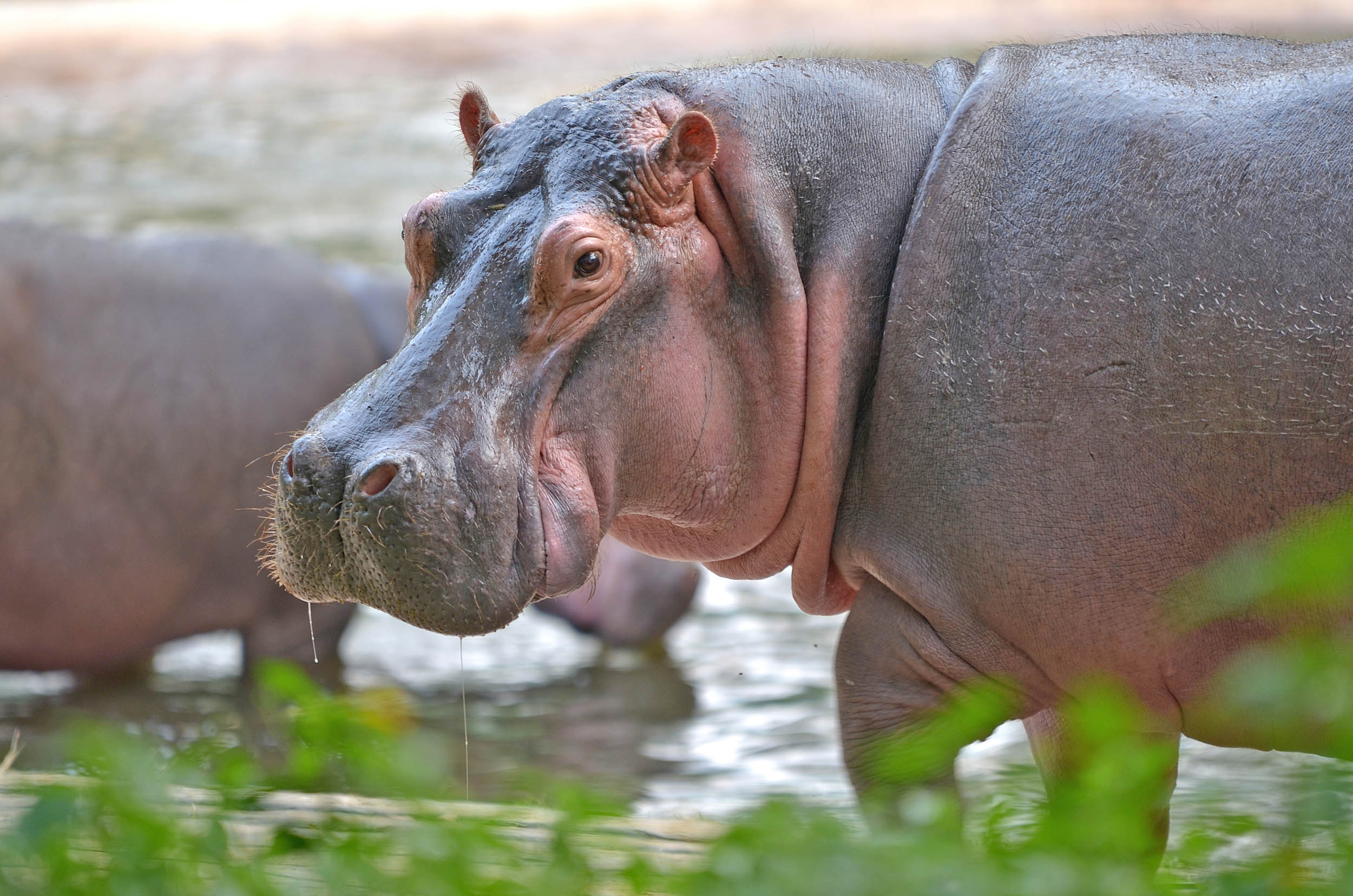
Due of the various water bodies that are present in the parks, hippos can be spotted in several of the country’s parks. After elephants, they are the second-largest mammals and spend much of their time in the water. Keep in mind that these creatures can only bounce at the water’s bottom because they cannot float or swim. They can also be submerged in water for around six minutes without breathing.
Due to the abundance of hippos in Uganda, these are a sure thing. These are best viewed from boats, and you may find them, among other places, in Semuliki game reserve, Queen Elizabeth National Park along the Kazinga Channel, Lake Mburo National Park, and Murchison Falls National Park.
Zebras:
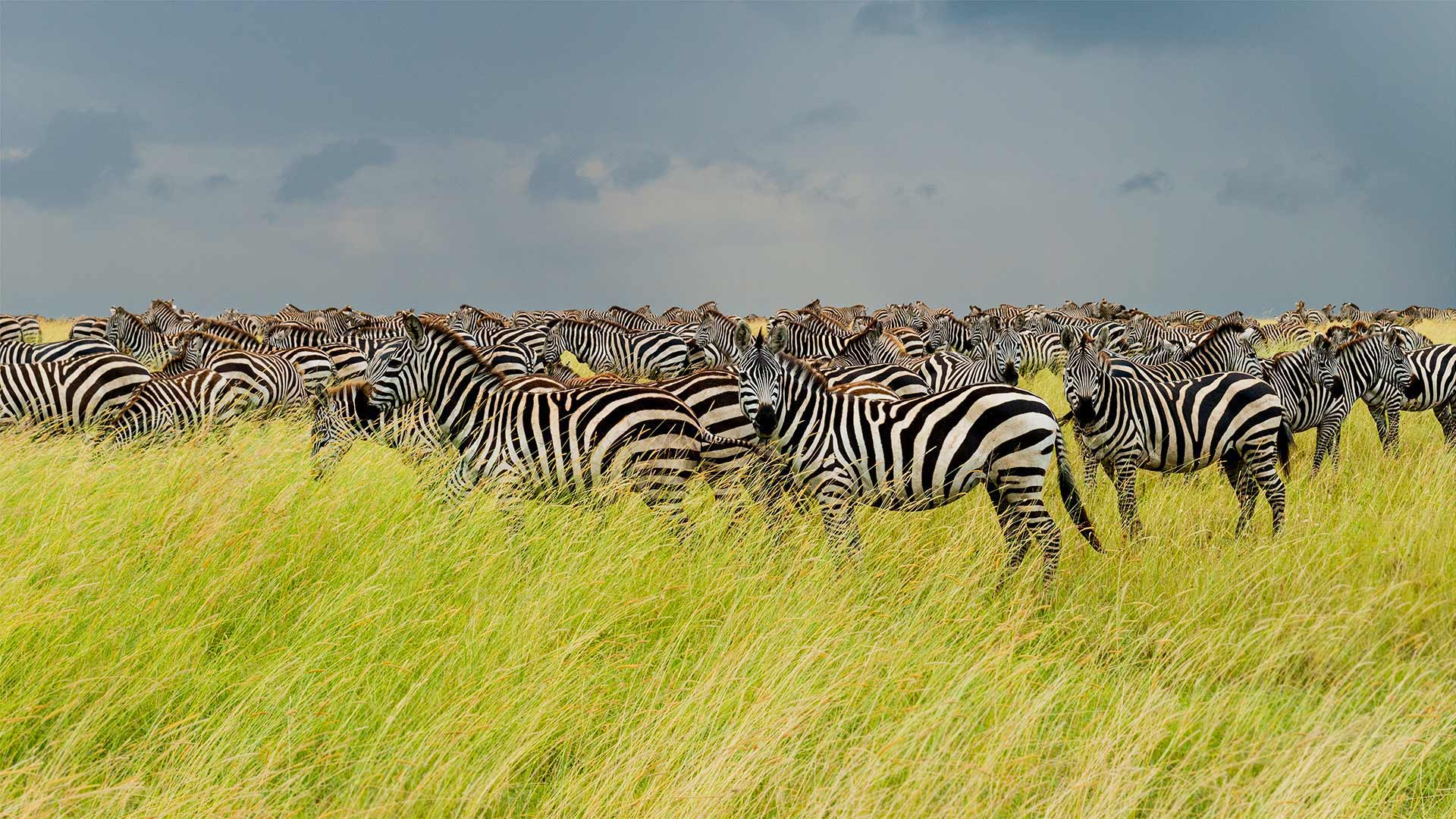
Uganda currently possesses about 3000 zebras, and they are the common zebra. They are found in big herds, and if you pay great attention, you can never locate two zebras with the exact same pattern. They struggle to deal with humans and, in most circumstances, try to flee when they come into contact with them.
Due of the constantly shifting climate and the consequent decline in the vegetation they depend on, their population has also decreased. The Kidepo Valley National Park and Lake Mburo National Park are the greatest places to watch zebras since they are vast grasslands where they can freely roam.
Rothschild Giraffe:
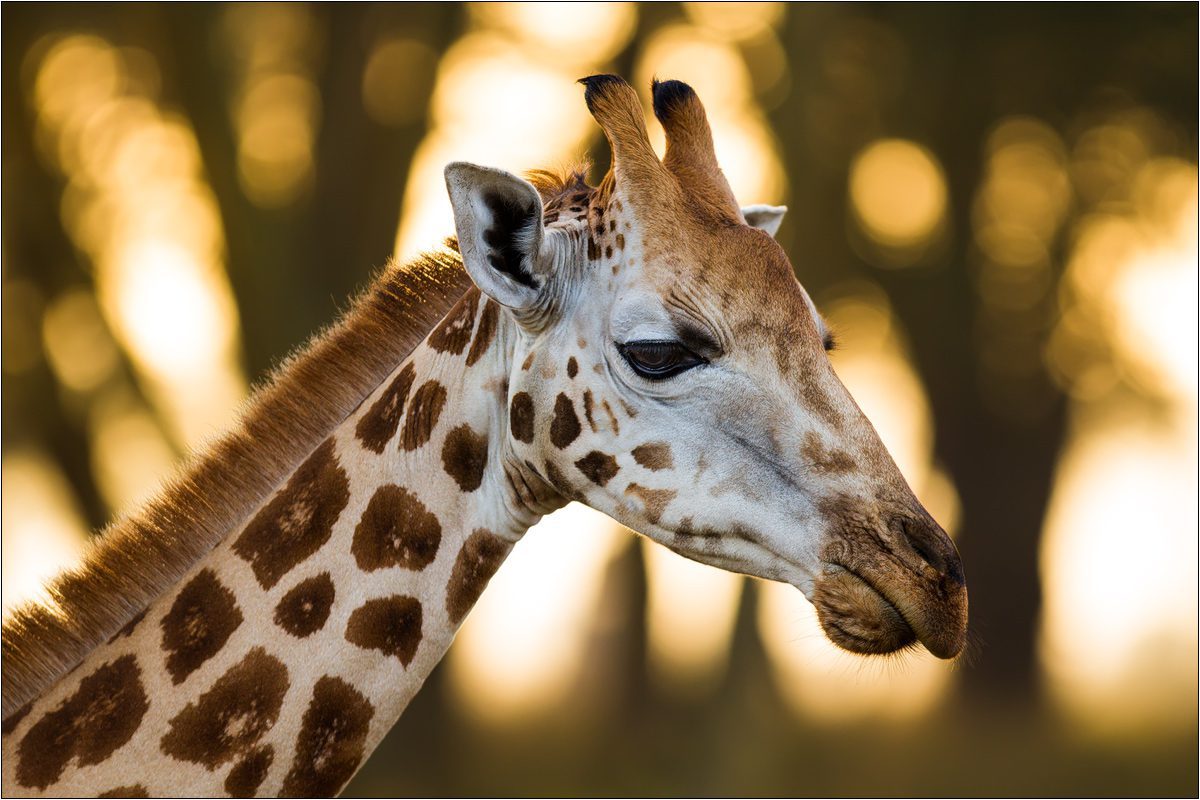
Only in Uganda and Kenya are Rothschild Giraffes, also referred to as Ugandan Giraffes, to be found. These giraffes do not have any spots on their legs, and what sets them apart from other giraffe species is that their spots are a little darker and less distinct. The male giraffes are among the calmest creatures, moving in their herds apart from the female herds.
Male giraffes only engage in combat when they wish to establish dominance or obtain access to the females. The Uganda Wildlife Education Centre and the Murchison Falls National Park are the greatest places to watch giraffes because you can perhaps feed them there.
One species you should watch out for while on a safari in Uganda is the common warthog, which was portrayed as Pumba in the well-known Lion King. These are omnivores and dwell in barrows. These are present in practically all of the nation’s national parks, including Queen Elizabeth and Lake Mburo.
Reptiles
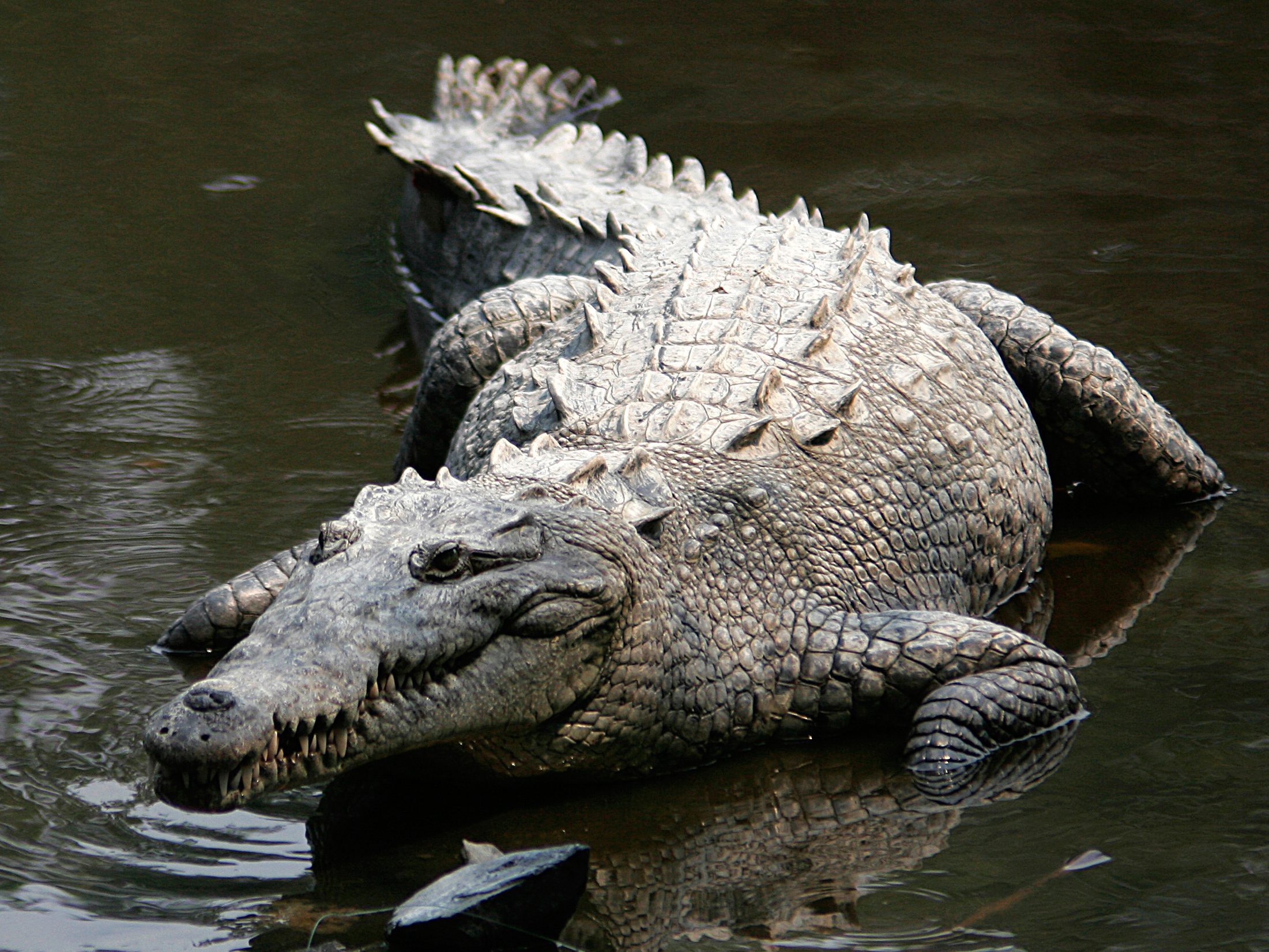
Due to Uganda’s proximity to the equator, various species of reptiles can be found there. In Uganda, crocodiles and snakes are the most typical reptiles to witness.
Snakes: There are various kinds of snakes, such as puff adders, black cobras, green snakes, and enormous pythons.
Nile crocodiles can be spotted in several national parks, including Queen Elizabeth, Lake Mburo, and Murchison Falls, as well as other bodies of water throughout the nation.
Carnivores in Uganda
Lions:
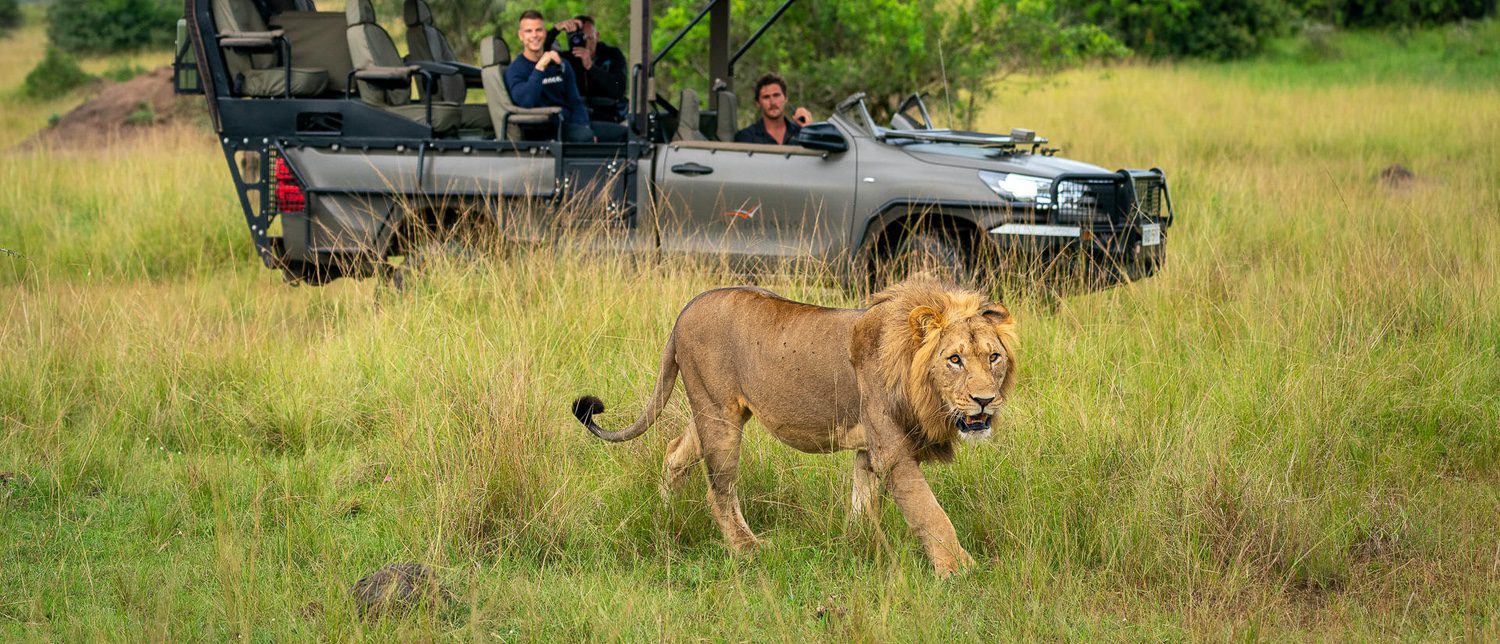
Uganda has a total of 38 carnivores and these include the following Lions, Leopards, Cheetahs, Jackals, Mongoose, African civets, Hyenas, Otters, Genets, and Serval, Caracal, Bat-eared fox, and African wild cats.
Spotted Hyenas are the most common carnivores in Uganda and even though they are mainly nocturnal, there is a chance that you might spot a few during the day.
The hyenas hunt in groups of 2 to 5 and they can both hunt for their own and also eat carcasses including their bones. They communicate through their barking which sounds like a laugh to inform the pack that there is potential food in the area. The best chances of seeing the hyenas are in Kidepo National park, Lake Mburo National Park, Murchison Falls National park, and Queen Elizabeth National Park.
The Six Big Animals
Kenya Safari Leopald
The big five can be found in Uganda’s several national parks, including Kidepo National Park, Queen Elizabeth National Park, and Murchison Falls National Park. While gorilla trekking is what Uganda is most famous for, the other four members of the “big five”—elephants, lions, buffalos, and leopards—can also be found there.
White Rhino:
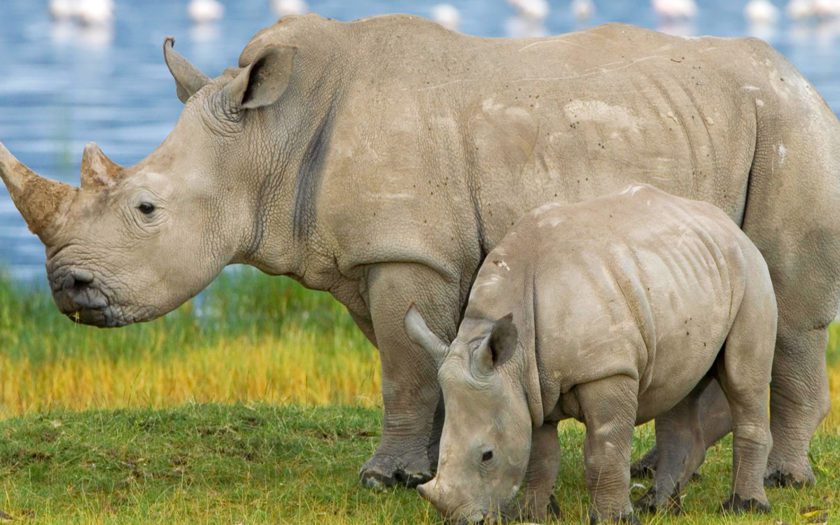 Currently, the only rhino species found in Uganda is the white rhino, which, despite its name, shares the same coloring as the black rhino. The white rhino has been reintroduced into the Ziwa Rhino sanctuary, whereas the black rhino, the fifth member of the “big five,” has gone extinct in Uganda owing to poaching. After the black rhino was declared extinct in 1983, the Ugandan government launched a campaign in 1997 and first reintroduced 22 white rhinos. The Ziwa Rhino refuge is the only spot in Uganda where you may see rhinos.
Currently, the only rhino species found in Uganda is the white rhino, which, despite its name, shares the same coloring as the black rhino. The white rhino has been reintroduced into the Ziwa Rhino sanctuary, whereas the black rhino, the fifth member of the “big five,” has gone extinct in Uganda owing to poaching. After the black rhino was declared extinct in 1983, the Ugandan government launched a campaign in 1997 and first reintroduced 22 white rhinos. The Ziwa Rhino refuge is the only spot in Uganda where you may see rhinos.
Lions Of Uganda:
Due to how well they blend into their surroundings, lions are also rather rare, but you will be able to see a few with the help of a knowledgeable tour guide. In Ishasha, which is part of Queen Elizabeth National Park, you can see lions the best. Due to their propensity for climbing fig trees, the lions in Ishasha are known as the climbing lions. Because climbing lions are uncommon, you shouldn’t pass up the opportunity to observe one lounging leisurely in the trees. Despite their rarity, lions can occasionally be observed in Semuliki, Lake Mburo National Park, and Murchison Falls National Park.
Leopards:
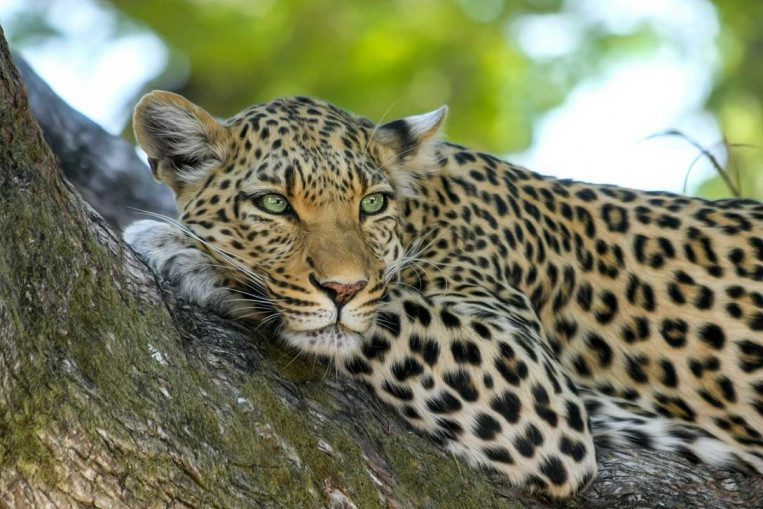 One of the species to view is the leopard, Panthera pardus pardus in scientific terminology. The leopard hunts primarily at night and operates alone, in contrast to the lions, who travel in packs. They often spend the day sleeping in caves or trees and emerge to hunt at night. But if you are lucky enough to witness a leopard during the day, it will astound you. Lake Mburo, Queen Elizabeth National Park, and Semuliki National Park are all places where leopards can be sighted.
One of the species to view is the leopard, Panthera pardus pardus in scientific terminology. The leopard hunts primarily at night and operates alone, in contrast to the lions, who travel in packs. They often spend the day sleeping in caves or trees and emerge to hunt at night. But if you are lucky enough to witness a leopard during the day, it will astound you. Lake Mburo, Queen Elizabeth National Park, and Semuliki National Park are all places where leopards can be sighted.
African Elephant:
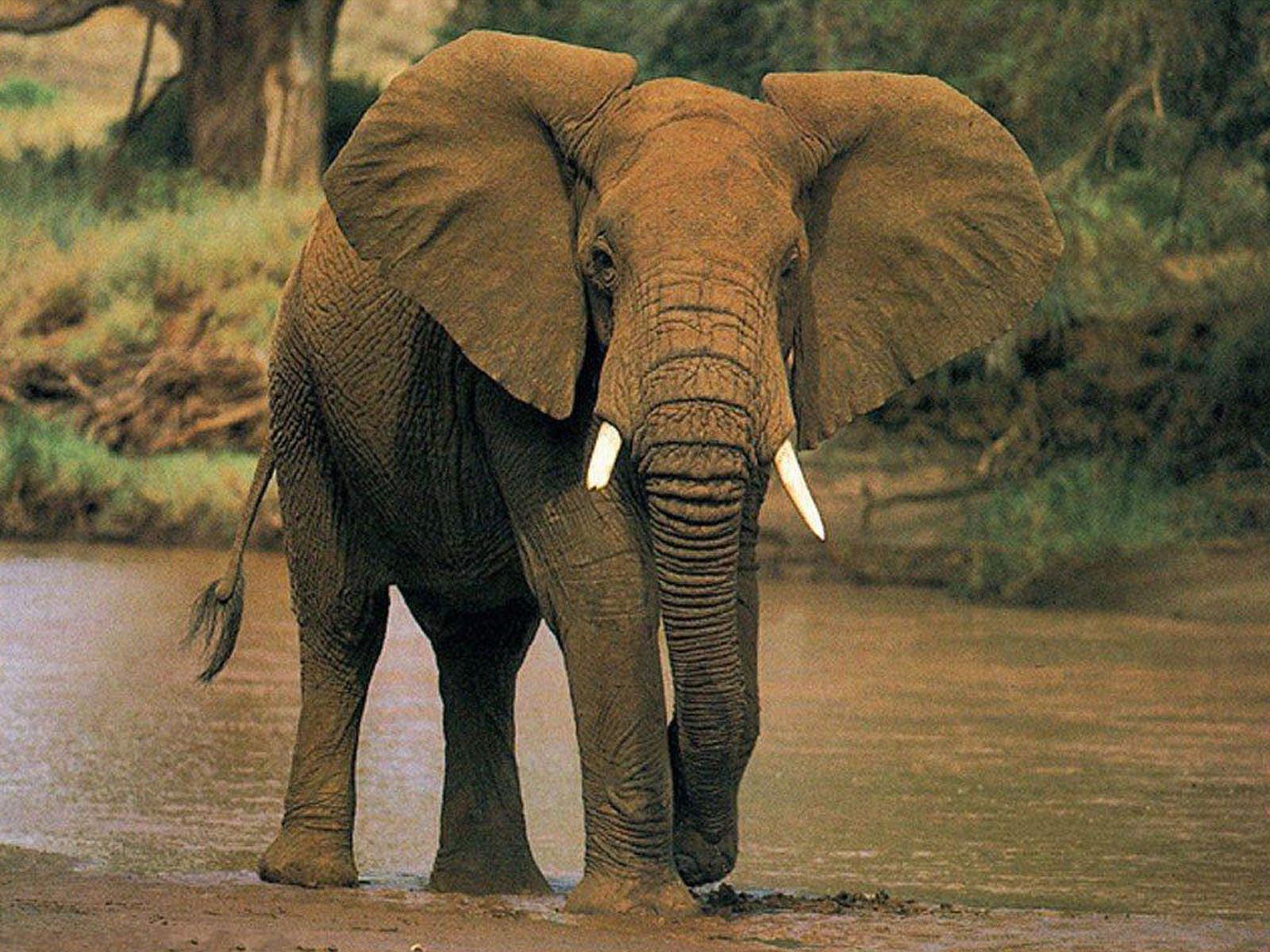 The largest animal in the jungle and one of the “big five” is the African elephant. They often live in packs, with a female elephant in charge of each pack. The African elephant can live up to 70 years old and consumes roughly 350kg of food and more than 200 liters of water each day.
The largest animal in the jungle and one of the “big five” is the African elephant. They often live in packs, with a female elephant in charge of each pack. The African elephant can live up to 70 years old and consumes roughly 350kg of food and more than 200 liters of water each day.
Although steps have been put in place to curb poaching, it would be difficult to restore the high number of elephants because only one calf is born every nine years. Prior to persistent poaching, Uganda had around 30000 elephants. Today, there are only approximately 2000 left. Elephants prefer the wide-open savannah grasslands, and they can be spotted at Queen Elizabeth and Murchison Falls National Parks. Various National Parks.
African Buffalo:
 One of the big five animals you should watch out for is the African buffalo, sometimes referred to as the Cape buffalo. They are regarded as one of the wild animals that are most dangerous, thus it is best to stay away from them at all times.
One of the big five animals you should watch out for is the African buffalo, sometimes referred to as the Cape buffalo. They are regarded as one of the wild animals that are most dangerous, thus it is best to stay away from them at all times.
Due of the extreme heat in the area, they frequently migrate in big herds and in the same general direction. They also spend the most of their time in the water cooling down. Buffalos are common at Lake Mburo National Park, Queen Elizabeth National Park, and Murchison Falls because they like spending all of their time in the water.
Bird Species in Uganda
Shoebill:
 More than 1000 different bird species can be spotted in Uganda in their natural settings. Because migratory birds migrate into the country around this period, the wet season is the perfect time to go birding.African shoebills, ostriches, African crowned cranes, brown-backed scrub Robins, croaking Cisticolas, white-tailed larks,
More than 1000 different bird species can be spotted in Uganda in their natural settings. Because migratory birds migrate into the country around this period, the wet season is the perfect time to go birding.African shoebills, ostriches, African crowned cranes, brown-backed scrub Robins, croaking Cisticolas, white-tailed larks,
African green pigeons, Martial Eagles, Grey Kestrels, little bee-eaters, Nubian woodpeckers, pelicans, and cormorants are among the bird species you should keep an eye out for while on a safari in Uganda. As of 2021, there were approximately 1070 bird species known to exist in Uganda.
Primates in Uganda
Golden monkeys:
![]() The different primates found in Uganda include Golden monkeys, Vervet monkeys, Black and white colobus Monkeys, Chimpanzees, Gorillas, Bush babies, Grey-cheeked Mangabeys, Patas monkeys, Red colobus monkeys, Potto, Red-tailed monkeys, and lesser bush baby.
The different primates found in Uganda include Golden monkeys, Vervet monkeys, Black and white colobus Monkeys, Chimpanzees, Gorillas, Bush babies, Grey-cheeked Mangabeys, Patas monkeys, Red colobus monkeys, Potto, Red-tailed monkeys, and lesser bush baby.
Mountain Gorillas:
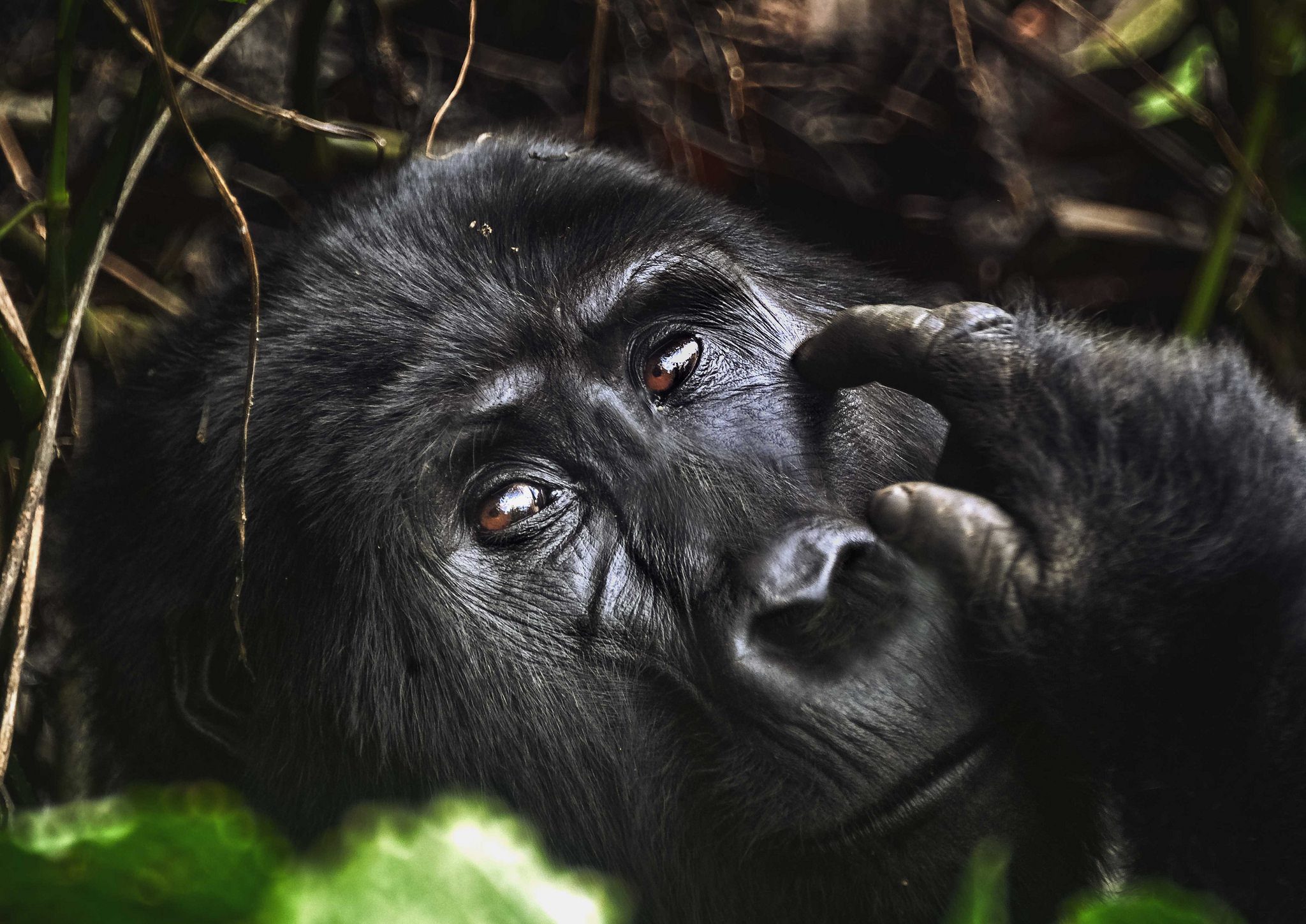 The most frequently seen wild creatures in Uganda are mountain gorillas. They are a popular tourist destination in large part because they are exclusively found in Uganda, Rwanda, and the Democratic Republic of the Congo (DRC). No one declines the chance to observe them because they are an endangered species.
The most frequently seen wild creatures in Uganda are mountain gorillas. They are a popular tourist destination in large part because they are exclusively found in Uganda, Rwanda, and the Democratic Republic of the Congo (DRC). No one declines the chance to observe them because they are an endangered species.
To observe the primates, you will need a gorilla permit, which costs $700 per person. To learn more about what to expect from gorilla trekking, see our post about gorilla trekking in Uganda. Two parks—Bwindi Impenetrable Park and Mgahinga National Park—are home to gorillas.
Baboons in Uganda
Olive baboons:
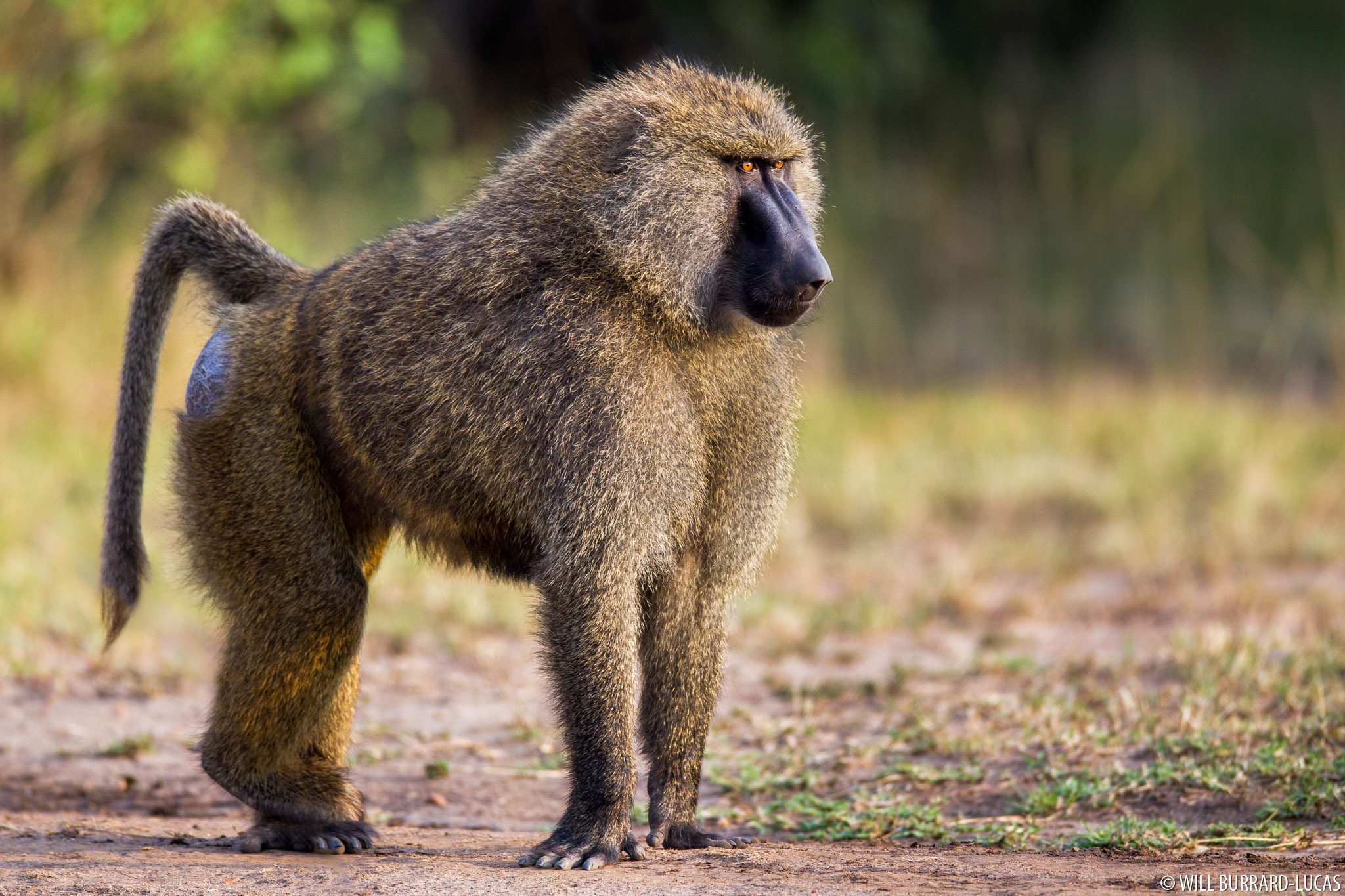
Uganda Chimpanzee:
![]() The second most exciting experience, after going in search of gorillas, is chimpanzee tracking. The closest living relative of humans, chimpanzees frequently behave like people. However, if they sense a threat, they may become hostile. Over 5000 chimpanzees live in Uganda, and some of them have been trained to get used to people. To trek the primates, you will also need a chimpanzee permit.
The second most exciting experience, after going in search of gorillas, is chimpanzee tracking. The closest living relative of humans, chimpanzees frequently behave like people. However, if they sense a threat, they may become hostile. Over 5000 chimpanzees live in Uganda, and some of them have been trained to get used to people. To trek the primates, you will also need a chimpanzee permit.
We have a post that goes into greater detail on chimpanzees and what to expect. In Kibale National Park, Budongo Forest in Murchison Falls National Park, and Kyambura in Queen Elizabeth National Park, one can go chimpanzee trekking.
Black & White Colobus Monkeys:
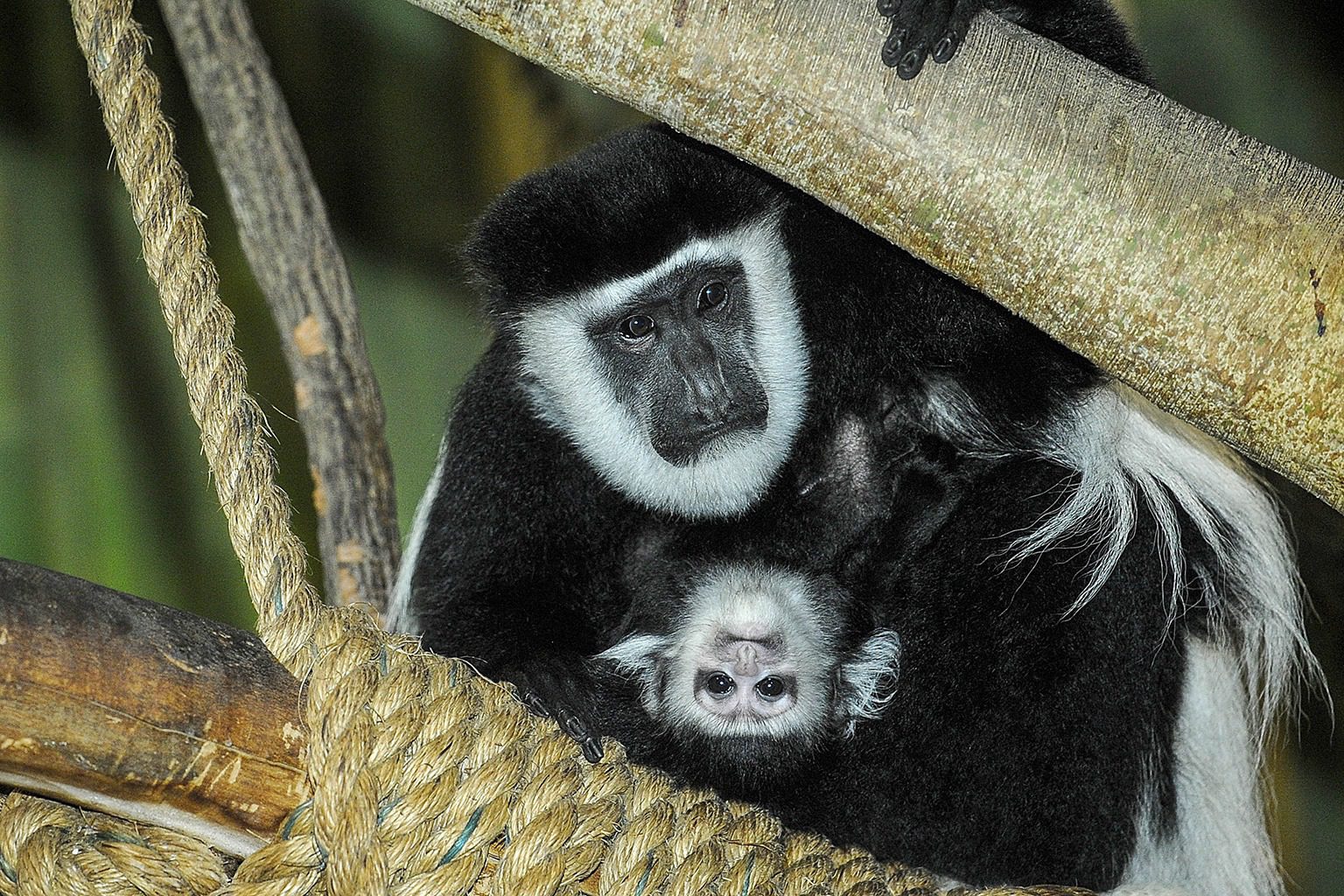 Black and white colobus monkeys are the most common monkeys in Uganda and can easily be found in every National Park in the country. The colobus monkeys are born white but at three months, they get their black coloring.
Black and white colobus monkeys are the most common monkeys in Uganda and can easily be found in every National Park in the country. The colobus monkeys are born white but at three months, they get their black coloring.
Golden Monkey:
One of the most exquisite primates in Uganda is this one. A popular third trekking activity, after visiting the mountain gorillas in Bwindi and the chimpanzees in Kibale, is now known as golden monkey trekking.
National Parks in Uganda
There are several National parks from where you can go for game viewing and these have been listed below so that you can choose your destination.
Bwindi Impenetrable National Park:
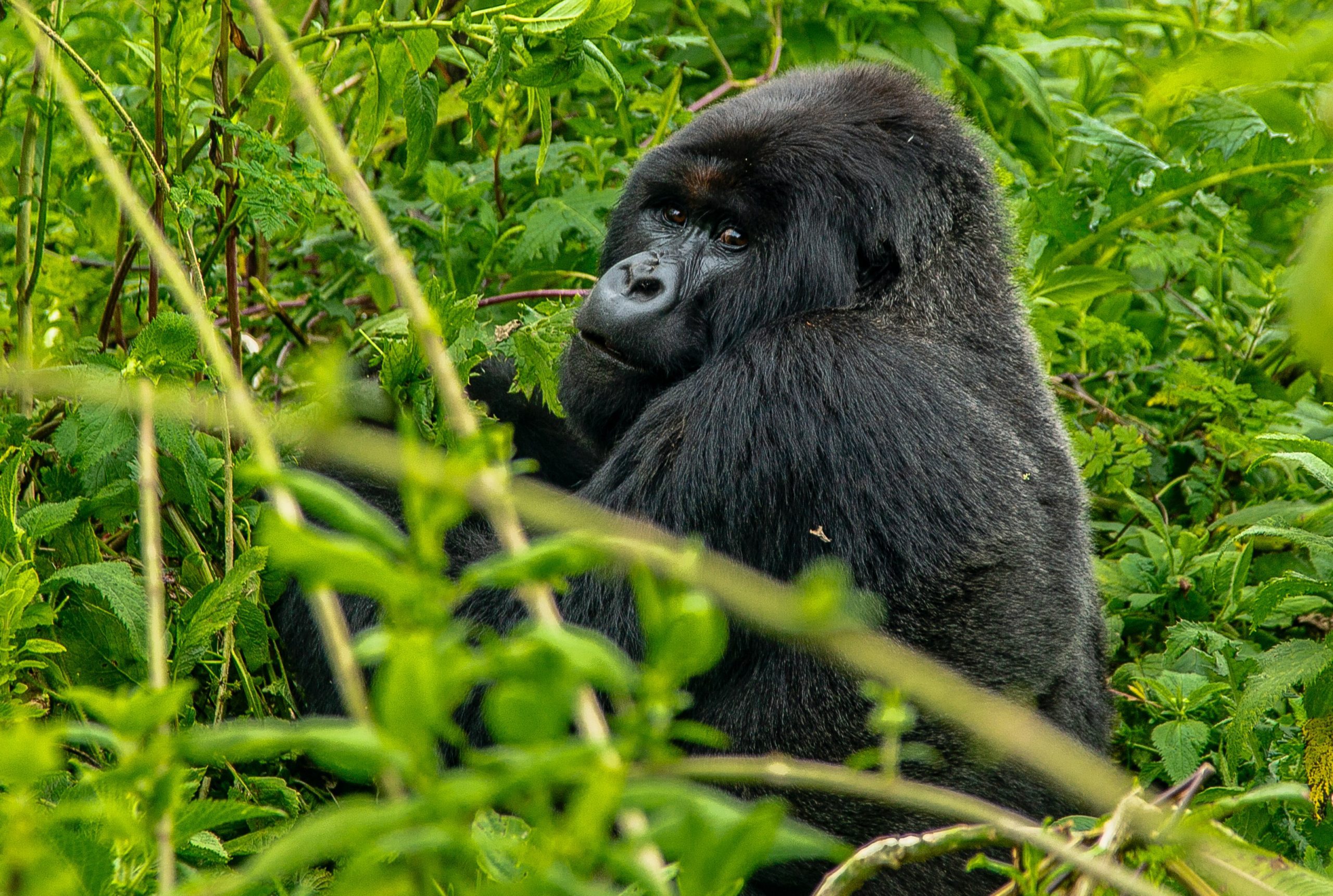 Bwindi is famous for gorilla trekking and is home to other primates. It has the largest population of the endangered Mountain gorillas in Uganda and while on a trek here, you also get to see other primates like monkeys and chimpanzees.
Bwindi is famous for gorilla trekking and is home to other primates. It has the largest population of the endangered Mountain gorillas in Uganda and while on a trek here, you also get to see other primates like monkeys and chimpanzees.
Murchison Falls National Park:
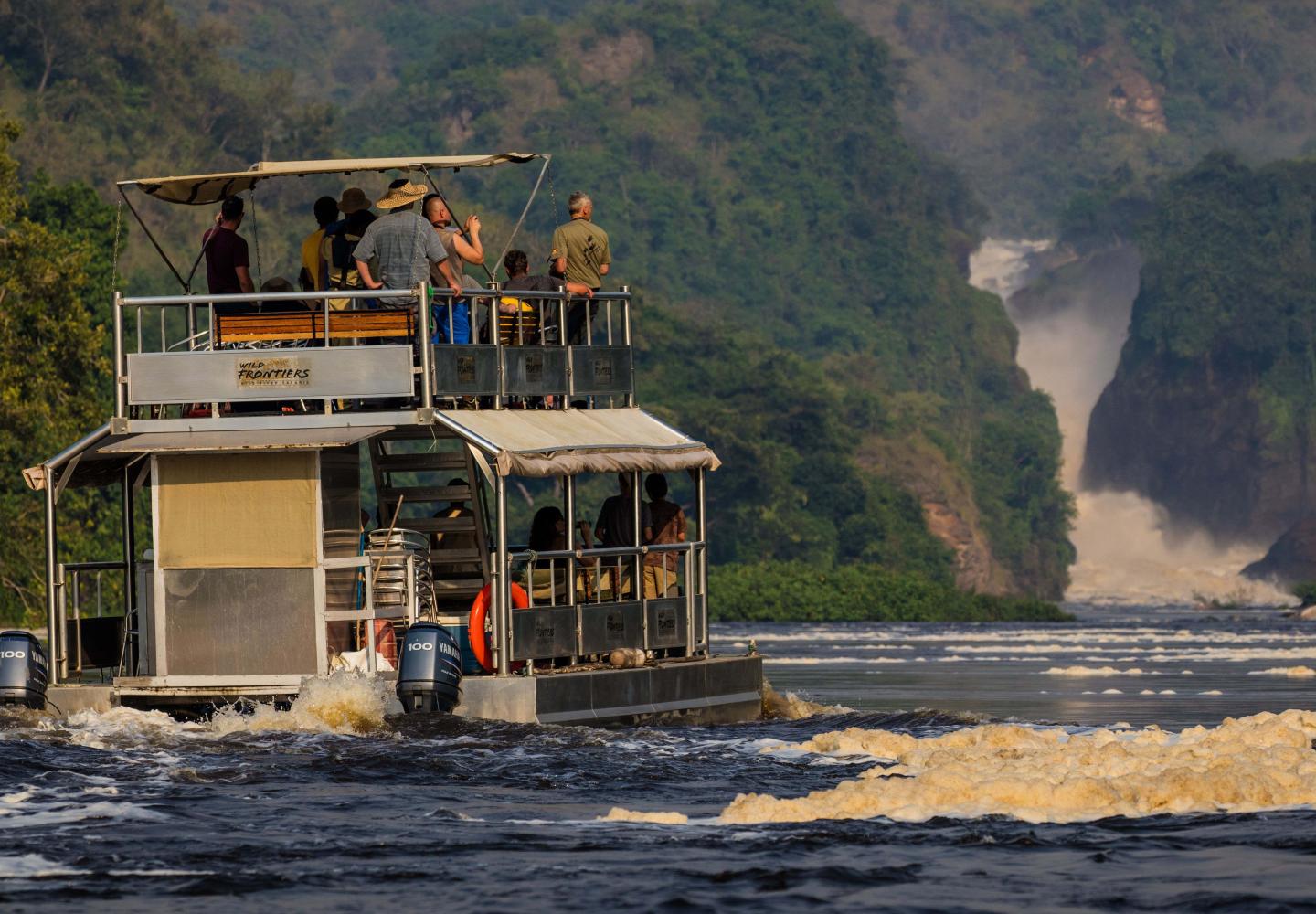 Murchison National Park which is best known for the large herds of elephants is the place to go for an all-year-round wildlife viewing while on a safari in Uganda. You will also be able to see other animals and birds and not forget the magnificent Murchison Falls.
Murchison National Park which is best known for the large herds of elephants is the place to go for an all-year-round wildlife viewing while on a safari in Uganda. You will also be able to see other animals and birds and not forget the magnificent Murchison Falls.
Queen Elizabeth National Park:
 Queen Elizabeth National park is located in the western part of Uganda and is the most visited National park in the country. The park has 95 recorded animal species, 612 bird species, and beautiful scenery that every tourist should check out. The scenery includes views from Mountain Rwenzori, Lake George, Lake Edward, and the Kazinga channel among others.
Queen Elizabeth National park is located in the western part of Uganda and is the most visited National park in the country. The park has 95 recorded animal species, 612 bird species, and beautiful scenery that every tourist should check out. The scenery includes views from Mountain Rwenzori, Lake George, Lake Edward, and the Kazinga channel among others.
Kidepo Valley National Park:
 Kidepo National park is located in the Northern part of Uganda and has excellent wildlife including lions, buffalos, zebras, giraffes, black-backed jackals, the cheetah which can only be found here, and leopards among others.
Kidepo National park is located in the Northern part of Uganda and has excellent wildlife including lions, buffalos, zebras, giraffes, black-backed jackals, the cheetah which can only be found here, and leopards among others.
Kibale National Park:
![]() A considerable number of primates are found in Uganda’s Kibale Forest Reserve, which is in the country’s southwest. The black and white colobus monkeys, baboons, chimpanzees, and red-tailed monkeys are just a few of the primates that may be seen in Kibale forest.
A considerable number of primates are found in Uganda’s Kibale Forest Reserve, which is in the country’s southwest. The black and white colobus monkeys, baboons, chimpanzees, and red-tailed monkeys are just a few of the primates that may be seen in Kibale forest.
Lake Mburo National Park:
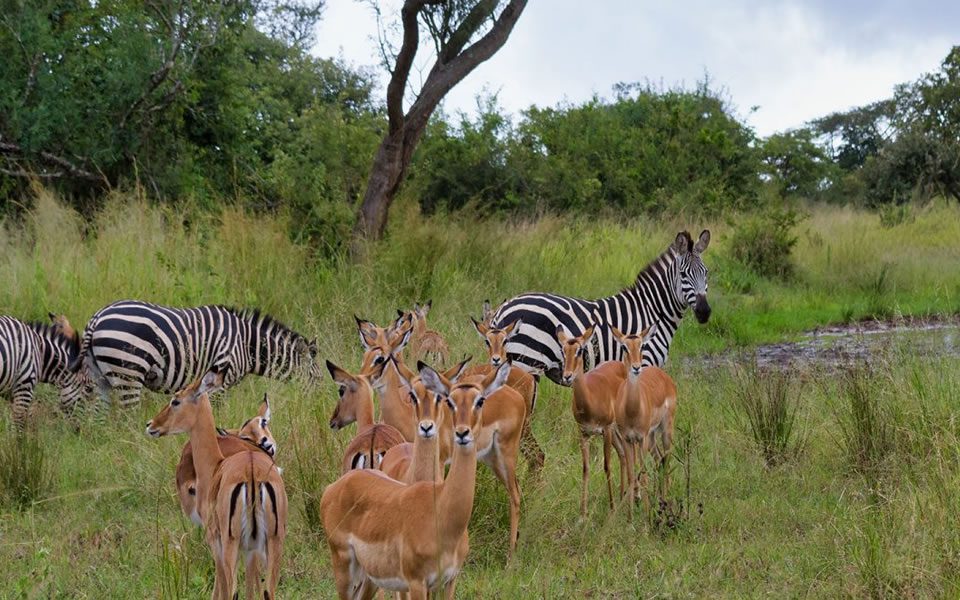 Located in western Uganda, Lake Mburo National Park has a variety of animals that are endemic to it and not found anywhere else in the country like the Topi and it has the largest population of impalas in Uganda.
Located in western Uganda, Lake Mburo National Park has a variety of animals that are endemic to it and not found anywhere else in the country like the Topi and it has the largest population of impalas in Uganda.
Forest Reserves in Uganda
Forest reserves are also tourist attractions in Uganda where you can see the different wildlife especially primates and bird species. These include;
- Budongo forest
- Kalinzu forest reserve
- Pabidi forest reserve
- Mabira forest
- Kanyiyo forest reserve
Packing list for wildlife viewing in Uganda
The items on your packing list often depend on the activities you plan to partake in while on a safari in Uganda. While certain activities, like hikes, are physically taxing, others, like game drives, are not. The anti-malarial medications should be the first item you bring, then the following items:
Binoculars and cameras.
Binoculars with at least 8×30 magnification should be brought on your safari. These will help you see the animals that are far away from you and those that blend in perfectly with their surroundings like the leopards. The camera should come with extra batteries because rest assured you are going to take a lot of photos while on your safari.
Strong and comfortable hiking boots: If you intend to go on a safari in Uganda, hiking boots are a necessity. It is one of the greatest methods to discover national parks and interact with the wildlife. Even if the shoes aren’t brand-new, make sure they aren’t too hefty because this could make you move more slowly while walking with the group.
Long-sleeved shirts and trousers (neutral colors)
Long-sleeved shirts and trousers help in preventing your skin from being scratched and the neutral colors are to help you blend in with the wild easily. Brightly colored clothes attract the attention of the animals and some of them might feel threatened.
Waterproof jackets or coats
Ugandan weather is extremely unpredictable and therefore you should carry your waterproof coat or jacket at all times so as not to get wet even when you have planned for your safari during the dry season.
Rules for wildlife viewing in Uganda
Murchison falls national park
To ensure that the species and the ecosystems where they are said to exist are maintained and not in any way threatened, the Uganda species Authority and park administration have developed a set of laws. The regulations were put in place to decrease animal deaths and poaching as well as to safeguard people from attacks by animals. These guidelines must be observed because failing to do so could result in fines or a lifetime ban from entering the parks.
Littering in the parks
Travelers bring food and bottled water with them when they go on game drives. So that the park may be preserved, you must always keep the trash within the van. To provide other visitors the chance to experience the national parks, you must leave them in the same condition that you found them.
Keep a distance away from the animals.
Whether you are eager to observe new or familiar animal species, it doesn’t matter—you must maintain a safe distance in order to safeguard both the animals and yourself. Even in the presence of a tour guide, the animals may feel intimidated if you try to approach them, and you do not want to find out how they would respond. If you’re into ape trekking, you must stay away from them if you’re feeling under the weather.
Maintain a slow speed while driving
While on your safari, you first need to know that the animals have a right of way and rule the wilderness. You are not to speed, you are supposed to drive on the given track and not go off course and this is to prevent drivers from knocking down the animals
How to watch the wildlife in Uganda
Game drives are the greatest ways to view Uganda’s wildlife. Two game drives are conducted daily in the various parks, with the first session beginning at 7:00 am and the second session beginning in the late afternoon. Game drives take you through the National Parks and let you get as close to the animals as possible.
Some guidelines to remember while on a game drive include not getting too close to the animals, staying in your vehicle, adhering to the tour guide’s instructions, and not making noise. Nature hikes and mobile camping are two additional methods to see the wildlife.
Best time for wildlife viewing in Uganda
While it is possible to visit Ugandan parks any time of year to see wildlife, the dry season is the ideal time. The two dry seasons in the country are from January to February and June to August. It is simple for travelers to detect the animals during the dry season since the grass is scarce and short and there is little water available, driving the animals to congregate near the waterholes.
During the dry season, both game drives and nature walks can be taken on the roads inside the National Parks. The dry season is sometimes referred to as the peak season since so many visitors come to the nation to witness the animals; prices also quadruple during this time.
The wet season lasts from September to December and March to May twice a year. Although you can also enjoy other activities like wildlife drives and trekking, birding is the ideal thing to do during the wet season. If you intend to travel to Uganda around this time, you should be prepared because the roads are practically impassable and flooded. Keep in mind that the wet season is referred to as the low season because there are less tourists there and lodging costs are lower.

Comments